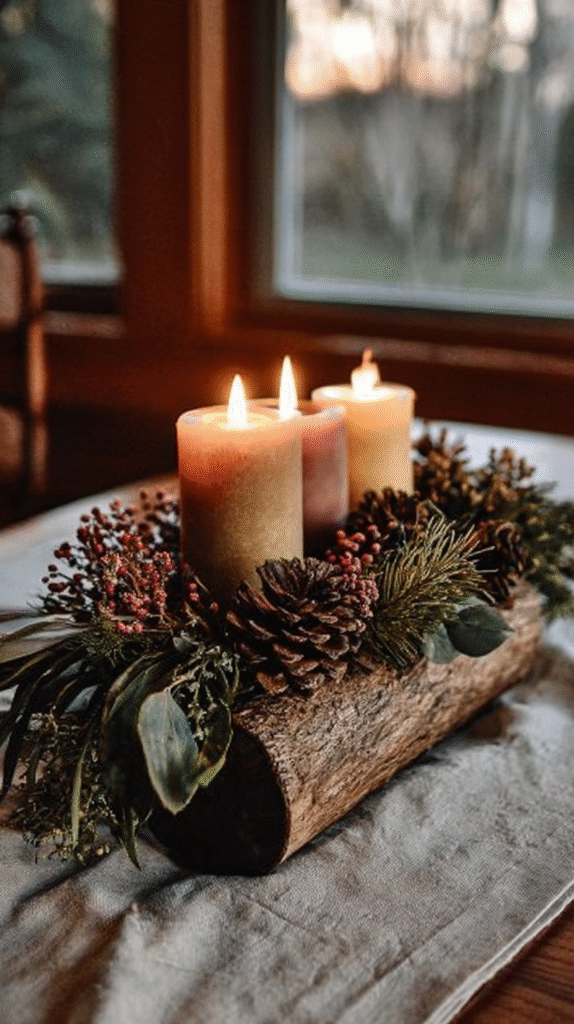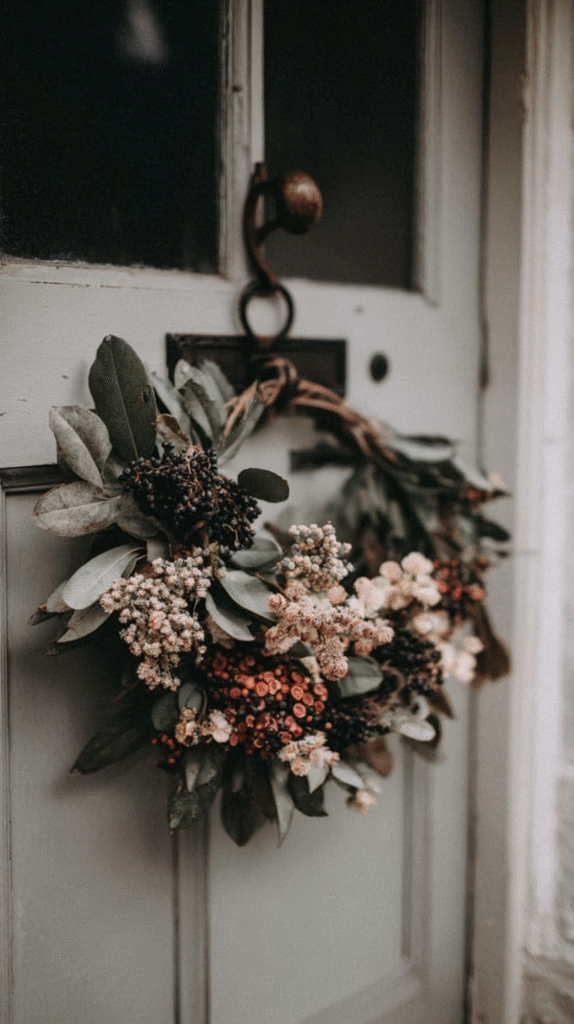This post may contain affiliate links, including those from Amazon Associates. If you make a purchase through these links, I may earn a commission at no additional cost to you. Learn more about our affiliate policy.
As the longest night approaches, the world grows quiet. Candles flicker in windows, evergreen scents fill the air, and the cold invites us inward.
Yule, the ancient celebration of the Winter Solstice, was once a sacred pause, a time to honor both darkness and returning light.
Today, that rhythm is easy to lose. The modern holiday season often feels fast, noisy, and disconnected from its roots. But when you return to the older ways of marking midwinter, everything softens. You remember what this season is really for: warmth, reflection, and renewal.
These forgotten Yule traditions invite you to reconnect with the old magic of winter. They’re simple, grounded practices that don’t require elaborate rituals, only attention and intention.
Whether you live in a forest cottage or a city apartment, you can weave these into your season to create a sense of meaning and peace.
To add more handmade warmth to your celebrations, explore 11 Easy Winter Solstice Nature Crafts That Double as Gifts for creative ways to infuse natural beauty into your Yule season.

Why Reviving Yule Traditions Matters
Before Yule became modern Christmas, it was a celebration of survival and renewal. People honored the cycles of nature, lit fires to call back the sun, and gathered to feast in the dark of winter. These acts were a grounding reminder of life when the days were short and cold.
Revisiting these customs brings you back into rhythm with the natural world. When you mark the Solstice with small, heartfelt rituals, you begin to feel the quiet pulse of the earth beneath the surface.
For many of us, these traditions are a way to step out of overwhelm and return to something slower, simpler, and more real.
Let these eleven ideas remind you that light always returns, and that winter holds its own kind of magic when we meet it with intention.
1. Burn a Yule Log

In old Europe, families chose a special log to burn during Yule. It symbolized warmth, protection, and the promise of light returning.
You can adapt this even without a fireplace. Choose a small branch or piece of wood, and write a word or intention on it, something you wish to carry into the coming year.
Light it in a fire-safe dish or candle flame and watch it glow. As it burns, imagine it clearing the old energy from your home and inviting renewal.
Keep a small piece of the ashes to use in next year’s fire or sprinkle them near your doorstep for protection.
2. Offer Food and Drink to the Ancestors
During the long nights of Yule, many cultures left offerings of food and drink outside for spirits, ancestors, or friendly household beings. It was a gesture of gratitude and respect for unseen forces that watched over the home.
You can do the same in a gentle, modern way. Leave a bit of bread, cider, or nuts outside on the night of the Solstice. As you set it down, take a moment to thank those who came before you, their strength, their endurance, their love.
When you wake the next morning, notice what’s changed. Whether the food remains or not, the act itself creates a bridge of remembrance and belonging.
3. Decorate with Evergreen and Holly
Evergreens have always symbolized life in the dead of winter. Long before garlands became holiday décor, people brought greenery indoors to remind themselves that the earth still lived beneath the frost.
Gather a few sprigs of pine, cedar, or holly, and weave them into simple arrangements. Place them on your table, windowsill, or altar. Their scent purifies the air and renews your space.
If you want to deepen the practice, whisper a blessing as you arrange the greens: “May life endure, may warmth remain, may light return.”
If you’re drawn to natural materials and rustic charm, you might enjoy 7 Easy Pinecone Ornament Ideas for a Witchy Winter Solstice, which offers simple ways to craft meaningful decorations from foraged finds.
4. Host a Midnight Feast and Storytelling

Before electricity, people celebrated Yule by gathering around the fire, sharing stories, and eating together late into the night. It was a time to honor both ancestors and the turning of the year.
Invite a few friends or family members for a candlelit meal. Keep it simple with root vegetables roasted with herbs, bread, and mulled cider.
After eating, turn off the music and share stories. They can be personal memories or tales of the old myths.
Here are some ideas for natural Winter Solstice decorations for your gathering.
If you celebrate alone, write a letter to yourself from last year’s version of you, reflecting on what has changed and what has stayed true. The act of reflection is its own kind of storytelling.
5. Save a Piece of the Yule Log
In some regions, families kept a small piece of the burned Yule log to use for lighting next year’s fire. It represented continuity and carried the warmth of one winter into the next.
After your own log has cooled, save a small chunk or a pinch of ashes. Store it somewhere safe—perhaps wrapped in cloth near your altar or tucked in a jar. Next winter, light your candle or fire with that same ember.
This small act connects your years together, reminding you that time is circular, not linear.
6. Honor the Oak King and Holly King
Ancient mythology tells of two kings; the Holly King, who rules the dark half of the year, and the Oak King, who reigns over the light. At Yule, the Oak King’s victory marks the sun’s slow return.
To revive this, find two natural objects that symbolize them; a holly sprig and an acorn, or two small twigs. Display them together in your space. On the Solstice, move the Oak symbol to the center to honor the turning of light.
This doesn’t need to be theatrical. It’s simply a reminder that life moves in cycles and that darkness always gives way to dawn.
7. Keep a Quiet Vigil
Yule was often celebrated with a vigil—the act of staying awake for part of the longest night to greet the returning sun.
You can adapt this by setting aside an hour for stillness. Turn off your screens, light a single candle, and sit quietly. You might write, meditate, or simply listen to the silence. Let your thoughts slow until you can hear the hum of your own heartbeat.
Even a brief vigil can feel like a reset, pulling you out of the rush and back into rhythm with the season.
8. Practice Simple Divination
The Solstice has always been considered a liminal time, when the veil between worlds feels thin. People once used runes, bones, or even candle wax to glimpse the year ahead.
For a gentle modern version, sit with a few natural objects—stones, pinecones, or cards. Choose one at random, close your eyes, and ask, “What energy wants to guide me this winter?”
Let your intuition speak first, before the mind analyzes. Then write your answer in your journal. You’ll find meaning unfold slowly in the weeks ahead.
9. Create a Wreath of Memory

Wreaths originally symbolized the wheel of the year. Some were made with feathers or small ornaments representing birds, as winter was also a time to honor creatures enduring the cold.
Make your own wreath from pine branches, berries, and whatever you have on hand. Add one object like a charm, feather, or written name for someone or something you wish to remember this season.
Hang it on your door as both a welcome and a remembrance. It reminds you that connection exists in both directions—those you love never truly leave.
10. Sweep Out the Old Year
Many old Yule customs involved cleaning or sweeping before lighting the fire, symbolizing clearing out stagnant energy and making space for the new.
Choose one simple act of renewal, so wipe down your counters, tidy your altar, or sweep the entryway. As you clean, imagine sweeping away what no longer serves you.
When you’re done, light a candle or incense and let the air shift. This small action transforms everyday chores into ritual.
11. Plant a Seed of Intention

In ancient times, seeds were blessed during Yule to mark the returning light. Even in winter, planting something symbolized trust in the future.
Fill a small pot with soil and press one seed inside like herbs, flowers, or even a bulb. As you cover it, speak a word for the year ahead: “growth,” “balance,” “joy.” Place it somewhere it will catch sunlight.
Each time you water it, remember the promise of this season—that even in darkness, life is already stirring.
Bringing These Traditions Into Your Rhythm
You don’t need to do all eleven. Choose one or two that speak to you and let them become part of your own seasonal rhythm. These aren’t performances; they’re quiet acts of connection.
Gather your materials slowly, maybe on a winter walk. Set aside a single evening for crafting or reflection. The goal is not to replicate history, but to create a moment of presence. These simple gestures help you anchor yourself in the natural turning of the year.
If you live in a small space, scale things down, a candle instead of a bonfire, a potted herb instead of a wreath. Meaning is measured in attention, not size.
For inspiration on deepening your seasonal connection, read 7 Winter Solstice Ritual Ideas to Welcome the Return of the Light, which complements these traditions with soulful, light-centered practices.
Closing Reflection
The beauty of reviving Yule traditions is that they remind us of what endures. Fire, food, story, light, and love—these are the constants that have carried people through winter for centuries.
When you light your candle, offer food to the unseen, or plant a seed, you become part of that ancient rhythm. You remember that rest is sacred, that light returns in its own time, and that your home can be a place of quiet renewal even in the coldest season.
Choose one small tradition tonight. Let it mark the turning of your own year. As you do, know that you are part of a long lineage of women who have tended the hearth and trusted in the return of the sun.



